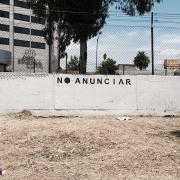Urban Street Art and Social Movements in Oaxaca, Mexico: 1968/2006/2015
Héctor Espinosa
Founder of Galeria Anomolía
Abstract
Mexico has a rich visual tradition--from pre-Hispanic cultures that covered their temples with colorful murals of which there are still vestiges to the interventions of large buildings in major cities across the country sponsored by international festivals. In his talk, Hector Espinosa provides a historical review of the muralist tradition, and illustrates how the main muralist movements of Mexico have always been triggered by social movements or major events in Mexican political history. Espinosa has selected four historical periods to illustrate this pattern: the first great muralist movement which emerged after the Mexican Revolution in 1921, the graphic protest art generated by the student movement of 1968, the stencil art created by the SUMA Group in the late seventies and early the eighties, and the enormous wealth of graphics generated in 2006 by the APPO (Popular Assembly of the Peoples of Oaxaca Assembly). He shall also consider how these movements relate to the new murals sponsored by large multinational brands, raising questions such as: how does art influence urban public space?
Hector Espinosa was born in Mexico City and completed a Visual Arts degree at the National Autonomous University of Mexico. Espinosa’s first solo photography exhibition was in 1996, and since then he has explored the processes of image creation through the use of various graphic techniques. In 2011, Espinosa formed Galeria Anomolía, an independent exhibition space and print studio. Galeria Anomalía has been the site of various collaborations between Mexican artists and visiting artists from Canada, Guatemala, Spain, and Germany. These have primarily entailed mural painting and workshops in various urban neighborhoods in Mexico City and Oaxaca, seeking primarily to promote coexistence between art, the street, and its inhabitants.

